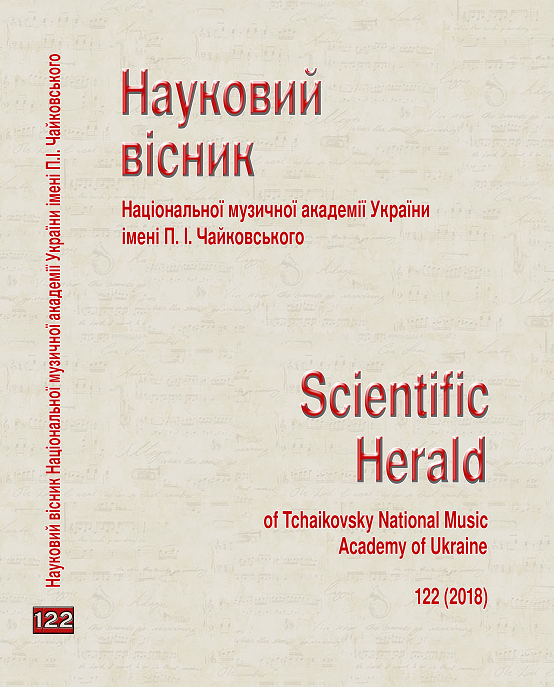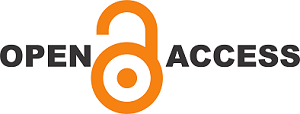European musical traditions in the pieces for viola by Hennady Liashenko
DOI:
https://doi.org/10.31318/2522-4190.2018.122.141806Keywords:
viola, repertoire for viola, colorizing, expressivity, European traditions, Ukrainian instrumental musicAbstract
Relevans of the study. The developing of viola’s repertoire in XX century has nearest connections with the rebuilding conditions of national instrumental schools: especially, of those ones, where chamber musical art has the mainly way. Connections between national school and European art in Ukrainian music for viola are deep and widely demonstrated. H. Liashenko’s creation for viola and piano, viola and Chamber orchestra, are very popular among the performers. The rich associations, new senses or new meanings about viola timbres specifies in his works are crossed with the achievements of great European compositions for viola (Brahms, Reger, Hindemith, Bartok, impressionist style from Debussy).
We can seeing that in Liashenko’s early work for viola and piano “Prelude, Arietta and Dance” (1971) and in his next works – such as “Con amore” (composer noted its specifically genre as “musical gift”) for viola and chamber orchestra (2003), in his Viola Concert with chamber orchestra (2006) and also in his next “Technema number 2” for viola, flute and harp (2012). Expressions and lyrics in the same time, dramatic waves and coloristic ranges are for him the reasons to discover viola’s timbre and technical possibilities for its exactly impressions.
Main objective of the study in the area of raising the borders of viola’s repertoire, because Liashenko’s works now are really the part of European music for viola and they represent Ukrainian viola music in the whole of the world. From Liashenko’s style unique features are strong feelings, deep senses, nationally quality, personality and individual musical language, – and they all are important to reconstruct his composer method. Methodology. The main methodology in this studying is the comparative analyses, which used in the historical and theoretical recourses. Results and conclusions. The works for viola by Hennady Liashenko are the important ones in the sense of renews conception of European traditions. In our meanings they are such an author “messages” which contain deep philosophical ideas of European culture, nature from Ukrainian art, folk impress. Practical significance. The pieces for viola by H. Liashenko in our means is the necessary adding to viola’s repertoire for professional studying . These ones are musical examples, which step by step open specifies of Ukrainian viola art in its Europeaning context
Downloads
References
Borovyk, I. (1984), “Works for a Trio”, Muzyka [Music], vol. 4, p. 21. [in Ukrainian].
Borovyk, I. (1997), Ukrainian Chamber Instrumental Ensemble, Tsentrmusinform, Kyiv, 118 p. [in Ukrainian].
Sadova, L. (1994), Stylish features chamber works by Hennady Liashenko, Ukrajinsjka fortepianna muzyka ta vykonavstvo: styljovi osoblyvosti, zv'jazky z muzychnoju kuljturoju Zakhidnoji Jevropy [Ukrainian Piano Music and Performing: Stylish Features, Communications with Music Culture of Western Europe] : Materials of the III scientific-practical conference of the Association of pianists-teachers of Ukraine. Lviv, 75-76 p. [in Ukrainian].
Sacheva, T. (2008), “Pages of music by Hennady Liashenko”, available at: http://www.umoloda.kiev.ua/number/1315/164/46426/ (accessed 15 June 2018) [in Ukrainian].
Shurova, N. (1984), “Searches of Genre Synthesis”, Kuljtura i zhyttja [Culture and Life], vol. 17 (22.04.1984) [in Ukrainian].
Downloads
Published
How to Cite
Issue
Section
License
Our journal abides by the CREATIVE COMMONS copyright rights and permissions for open access journals.
Authors, who are published in this journal, agree to the following conditions:
The authors reserve the right to authorship of the work and pass the first publication right of this work to the journal under the terms of a Creative Commons Attribution License, which allows others to freely distribute the published research with the obligatory reference to the authors of the original work and the first publication of the work in this journal.
The authors have the right to conclude separate supplement agreements that relate to non-exclusive work distribution in the form in which it has been published by the journal (for example, to upload the work to the online storage of the journal or publish it as part of a monograph), provided that the reference to the first publication of the work in this journal is included.




